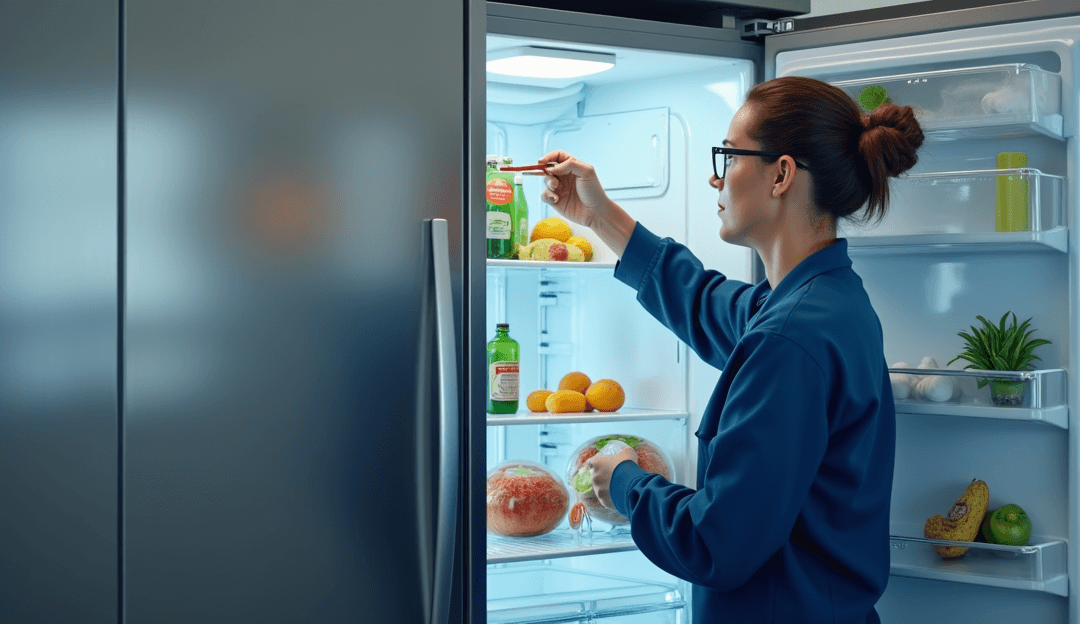How to Perform Basic Maintenance on Your Refrigerator: A Step-by-Step Guide
- Why Refrigerator Maintenance is Important
- Tools and Supplies Needed
- Step-by-Step Refrigerator Maintenance Guide
- When to Call a Professional
- Conclusion
Why Refrigerator Maintenance is Important
Regular refrigerator maintenance is crucial for several reasons:
- Energy Efficiency: A well-maintained refrigerator uses less energy, saving you money on your electricity bills.
- Extended Lifespan: Keeping your fridge clean and in good working order can extend its life, delaying the need for costly replacements.
- Food Safety: A clean and properly functioning refrigerator ensures your food stays fresh longer, reducing waste and preventing foodborne illnesses.
- Prevention of Breakdowns: Routine checks can identify potential issues before they turn into major problems, helping you avoid expensive repairs.
Tools and Supplies Needed
Before you begin, gather the following tools and supplies:
- Soft cloths or sponges
- Mild dish soap
- Baking soda
- Vacuum with a brush attachment
- Coil cleaning brush
- Leveling tool
- Replacement water filter (if needed)
- Screwdriver (if needed)
Step-by-Step Refrigerator Maintenance Guide
Step 1: Clean the Interior
- Empty the Refrigerator: Remove all food items and place them in a cooler to keep them fresh while you clean.
- Remove Shelves and Drawers: Take out all removable parts and wash them in warm, soapy water. Let them dry completely before replacing them.
- Wipe Down the Interior: Use a soft cloth and a mixture of mild dish soap and water to wipe down the interior walls and surfaces. For stubborn stains, use a paste made of baking soda and water.
- Dry Thoroughly: Ensure all surfaces are dry before putting shelves, drawers, and food back in the fridge.
Step 2: Check and Clean the Gasket
- Inspect the Gasket: The rubber seal around the refrigerator door (gasket) ensures a tight seal. Check for cracks, tears, or signs of wear.
- Clean the Gasket: Use a cloth dampened with warm soapy water to clean the gasket, removing any dirt or grime.
- Check the Seal: Close the door on a dollar bill. If you can easily pull the bill out, the gasket may need to be replaced to ensure a proper seal.
Step 3: Vacuum the Coils
- Locate the Coils: The condenser coils are usually located at the back or bottom of the refrigerator.
- Unplug the Refrigerator: For safety, unplug the appliance before cleaning the coils.
- Vacuum the Coils: Use a vacuum cleaner with a brush attachment to remove dust and debris from the coils. This helps improve the refrigerator’s efficiency.
- Use a Coil Brush: For deeper cleaning, use a coil cleaning brush to reach areas the vacuum can’t.
Step 4: Inspect the Condenser Fan
- Locate the Fan: The condenser fan is typically found near the coils, usually at the back or bottom of the unit.
- Clean the Fan Blades: Use a soft cloth or brush to remove dust and debris from the fan blades.
- Check for Obstructions: Ensure there are no obstructions that could prevent the fan from spinning freely.
Step 5: Level the Refrigerator
- Check the Level: Use a leveling tool to check if the refrigerator is level. An unlevel fridge can cause doors to not close properly, leading to energy inefficiency.
- Adjust the Feet: If needed, adjust the refrigerator’s leveling feet to ensure it is properly balanced.
Step 6: Test the Temperature Settings
- Check the Settings: The recommended temperature for a refrigerator is between 37°F (3°C) and 40°F (4°C), and the freezer should be at 0°F (-18°C).
- Adjust as Needed: Make sure the internal temperatures match these settings to ensure food safety and energy efficiency.
Step 7: Clean the Drip Pan
- Locate the Drip Pan: The drip pan is typically located at the bottom of the refrigerator.
- Remove and Clean: Carefully remove the drip pan and clean it with warm, soapy water. Ensure it is dry before replacing it.
Step 8: Change the Water Filter
- Locate the Filter: The water filter is usually located in the refrigerator compartment or behind the unit.
- Follow Manufacturer Instructions: Refer to your refrigerator’s manual for specific instructions on replacing the water filter.
- Replace the Filter: Install the new filter according to the instructions, ensuring it is properly seated.
When to Call a Professional
While these maintenance steps are relatively straightforward, there are times when you should call a professional:
- Persistent Leaks: If your refrigerator has a persistent leak that cleaning the drip pan and ensuring it is level doesn’t resolve, a professional may be needed.
- Unusual Noises: Unusual sounds that persist even after cleaning the fan and coils may indicate a mechanical issue.
- Temperature Fluctuations: If you notice your refrigerator isn’t maintaining a consistent temperature, this could signify a problem with the thermostat or cooling system.
- Visible Damage or Wear: If you find significant damage to the gasket, coils, or any internal components, professional assessment and repair are advised.
Conclusion
Regular maintenance of your refrigerator is key to keeping it running efficiently and preventing costly repairs. By following these simple steps, you can ensure your appliance remains in top condition, keeping your food fresh and your energy bills low. Remember, when in doubt or if you encounter more complex issues, don’t hesitate to call a professional for help.
By taking proactive steps in maintaining your refrigerator, you’re not just extending its life but also contributing to a more energy-efficient home. Happy maintaining!
By following this guide, you’ll keep your refrigerator in peak condition and avoid the headaches of unexpected breakdowns. Remember, King Appliance Repair Company is always here to assist with any repairs or professional maintenance you may need!


